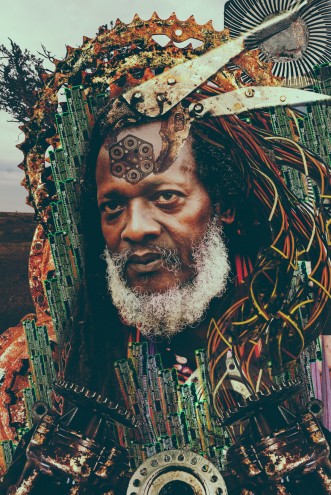From the Series
Tahir Carl Karmali’s Jua Kali photomontage series is currently exhibiting at United Photo Industries in Brooklyn until the end of March. We spoke to the Kenyan artist about the series, which he says is inspired by the informal sector that breathes character into Nairobi’s economy.
What does Jua Kali mean and what is it about?
To me, Jua Kali means: creativity, innovation, adaptation and growth. It's a sort of resilience, a kind of ever evolving term. However it's always been associated with manual labour and improvised working conditions. It has become a term that refers to the informal – moreover informal economic sector of Kenya. This series of work is basically looking at this concept of improvisation to illustrate a kind of resilient creativity to make ends meet. If you look carefully at the pieces it looks like it should not function – but it does and it's tough to describe why.
How does the subject of technology fit in with the Jua Kali pieces?
The IT sector in Nairobi is booming. Some people have formal education in it, however a lot just learn on the job or make it up as they go a long.
Could you tell us why you were drawn to photomontage for this series?
I think that there is something about cutting up bits and pieces and putting them together that matched the way Jua Kali artisans work.
What subjects interest you the most, when it comes to your practice?
Socio-Economics - I am very interested in the social relationships to how people make money. How their society fits within capitalist structures.
Do you have a specific design process when embarking on a new project?
New projects are tough. I try to just describe my current reality and show what is going on around me with my twist on it.
What is next for you?
I am currently putting together and researching my mixed heritage. I am planning on creating work around my heritage in Kenya. I want to use this to diversify the world's perceived image of Nairobi, Kenya and more over, Africa. Living in New York for the past two years has shown me the holes and gaps in Africa’s history in the minds of the global northern and western countries.
This artist was originally published on African Digital Art.













